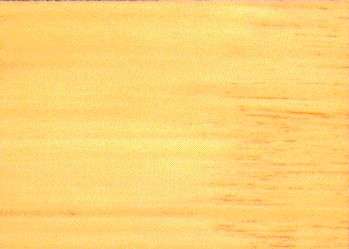
Animaram (Holoptelea integrifolia)
Family: Ulmaceae
Common names: Animaram, Arjan, Aval, Aya, Ayil, Ayli, Banchilla, Charha, Chilbil, Chilla, Chillar, Chilmil, Chilwal, Chirhol, Chorha, Churla, Daurango, Dhamna, Dhumnah, Goda-kirilla, Indian elm, Kacham, Kachao, Kaladri, Kalipapri, Kandru, Kanju, Karanjalam, Karanjel, Karanji, Karinji, Kauchia, Khulen, Kumba, Kunj, Kunja nali, Myaukseik, Nali, Namli, Navili, Papar, Papara, Papra, Papri, Peddanowli-eragu, Pyaukseik, Rajain, Ras bija, Tapasi, Tapsi, Thale, Thapsi, Vavli, Velayil, Vellayim, Wavuli, Wawali, Wowoli
Distributed in: Burma, India, Sri Lanka, Thailand (Oceania and S.E. Asia)
Common uses: Agricultural implements, Boat building (general), Boxes and crates, Broom handles, Brush backs & handles, Cabinetmaking, Carvings, Charcoal, Fuelwood, Furniture, Heavy construction, Joinery, Light construction, Millwork, Paneling, Plywood, Poles, Sporting Goods, Textile equipment, Tool handles, Toys, Vehicle parts, Veneer: decorative
Tree size: Tree height is 20-30 m
Colors: the heart isYellow, Yellow to golden-yellow to orangeand the sapwoodSame as heartwood
.The grain isInterlocked, the textureMediumand the lusterLustrous
Natural durability: Sapwood is susceptible to wood staining fungal attack, Very durable
Kiln Schedules: UK= C US=T3C2/T3C1 Fr=3
Kiln Drying Rate: Rapid (<10 days for boards < 32 mm, to <30 days for boards >= 63 mm)
Drying Defects: Slight twist/warp, Splitting
Ease of Drying: Slowly
Blunting Effect: Moderate
Cutting Resistance: Fairly Difficult to Very Difficult to saw
Planing: Very Good to Excellent
Resistance to Impregnation: Resistant sapwood
Response to hand tools: Easy to machine
Turning: Very Good to Excellent Results
Polishing: Satisfactory;
- Numerical data Metric
- Numerical data English
- Strength properties
- References
 |
 |
 |
 |
| Item |
Green |
Dry |
Metric |
| Specific Gravity |
|
|
|
| Density |
|
560 |
kg/m3 |
| Bending Strength |
579 |
907 |
kg/cm2 |
| Crushing Strength |
275 |
449 |
kg/cm2 |
| Hardness |
|
752 |
kg |
| Impact Strength |
|
86 |
cm |
| Shearing Strength |
|
200 |
kg/cm2 |
| Stiffness |
79 |
92 |
1000 kg/cm2 |
| Tangential Shrinkage |
|
|
% |
| Radial Shrinkage |
|
|
% |
| Weight |
|
|
kg/m3 |
| Maximum Load |
|
|
cm-kg/cm3 |
| Toughness |
|
|
cm-kg |
| Static Bending |
|
|
kg/cm2 |
|
 |  |  |  | | Item | Green | Dry | English | | Bending Strength | 8244 | 12907 | psi | | Density | | 35 | lbs/ft3 | | Hardness | | 1658 | lbs | | Impact Strength | | 34 | inches | | Maximum Crushing Strength | 3916 | 6397 | psi | | Shearing Strength | | 2847 | psi | | Stiffness | 1131 | 1321 | 1000 psi | | Weight | 34 | 27 | lbs/ft3 | |
Modulus of Elasticity (stiffness) = very low
Max. crushing strength = medium
Density (dry weight) = 31-37 lbs/cu. ft.
Bending strength (MOR) = medium
Toughness-Hammer drop (Impact Strength) = medium
Toughness-Hammer drop (Impact Strength) = low
Shearing strength (parallel to grain) = high
Modulus of Elasticity (stiffness) = low
Hardness (side grain) = medium
Density (dry weight) = 38-45 lbs/cu. ft.
Bending strength (MOR) = low
Bourdillon, T.F.,1908,The Forest Trees of Travancore,Travancore Government PressGamble, J.S.,1902,A Manual of Indian Timbers,Sampson Low, Marston & Co. LondonNazma,1981,A handbook of Kerala Timbers,Kerala Forest Research Institute Research Report, No.9Pearson, R.S., Brown, H.P.,1932,Commercial Timbers of India,Govt. Printer Calcutta,2 volsSekhar, A.C.,1967,Some Indian Timbers Equivalent to Foreign Timbers,Van Vigyan 5(1&2,pp18-24Sharma, S.N., et al,1960,Experiments on the High Temperature Drying of some Indian Timbers,Indian Forest Bulletin (N.S.,No.230Sono, P.,1974,Merchantable Timbers of Thailand.,Forest Products Research Division, Royal Forest Department, Bangkok,,Thailand.Sweet, C.V.,1922,Further experiments in the air-seasoning of Indian timbers and general,recommendations as to seasoning methods.,Indian Forest Records IX part V, Delhi, IndiaTewari, M.C., Jain, J.C.,1980,Utilization of Secondary Species,Journal of the National Building Organization 25(2) pp1-6
|








